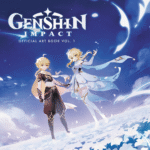How GTA 6 Could Transform a Controversial Red Dead Redemption 2 Mission Into a Fan-Favorite Feature
Popular Now
 Stumble Guys
Stumble Guys
 EA SPORT FC 25
EA SPORT FC 25
 Genshin Impact
Genshin Impact
 Minecraft
Minecraft
 Counter-Strike 2
Counter-Strike 2
 CarX Street
CarX Street
 EMI Calculator App & Loan EMI
EMI Calculator App & Loan EMI
 The Legend of Zelda
The Legend of Zelda
 Roblox
Roblox
 NBA 2K24
NBA 2K24 
As excitement continues to build for Grand Theft Auto 6 (GTA 6), fans are speculating about how Rockstar Games might evolve gameplay elements from their previous titles. One interesting opportunity lies in reworking a polarizing mission from Red Dead Redemption 2 into a highly engaging and beloved feature in GTA 6.
🔥 What Was the Controversial Red Dead 2 Mission?
In Red Dead Redemption 2, the mission “A Fork in the Road” required players to walk protagonist Arthur Morgan slowly through the streets of Saint Denis during a critical health-related scene. Many players felt frustrated with the lack of control and slow pacing, despite the emotional weight of the moment.
While the mission was narratively powerful, it clashed with the fast-paced expectations of open-world gameplay, leading to mixed reception.
🧠 What Rockstar Can Learn for GTA 6
With GTA 6 expected to push boundaries in realism, storytelling, and immersion, Rockstar has an opportunity to take the cinematic immersion of RDR2 and blend it more smoothly with player agency.
🎯 How It Could Work:
Interactive Cinematics: Allow players to influence conversations or choices during key moments without removing control.
Dynamic Pacing: Offer more control over movement, even in emotionally heavy sequences.
Optional Reflection Scenes: Let players choose to slow down and engage in immersive, character-driven interactions without forcing them.
🎮 Why This Could Be a Hit in GTA 6
GTA 6 is rumored to focus more on narrative depth and character development. If implemented well, reimagining the RDR2-style slow-burn missions could add:
Emotional Investment: Giving players more empathy for the protagonist.
Narrative Breaks: Slower scenes that contrast high-octane gameplay help build pacing and tension.
Worldbuilding: Quiet moments can show the environment and characters in more meaningful ways.










